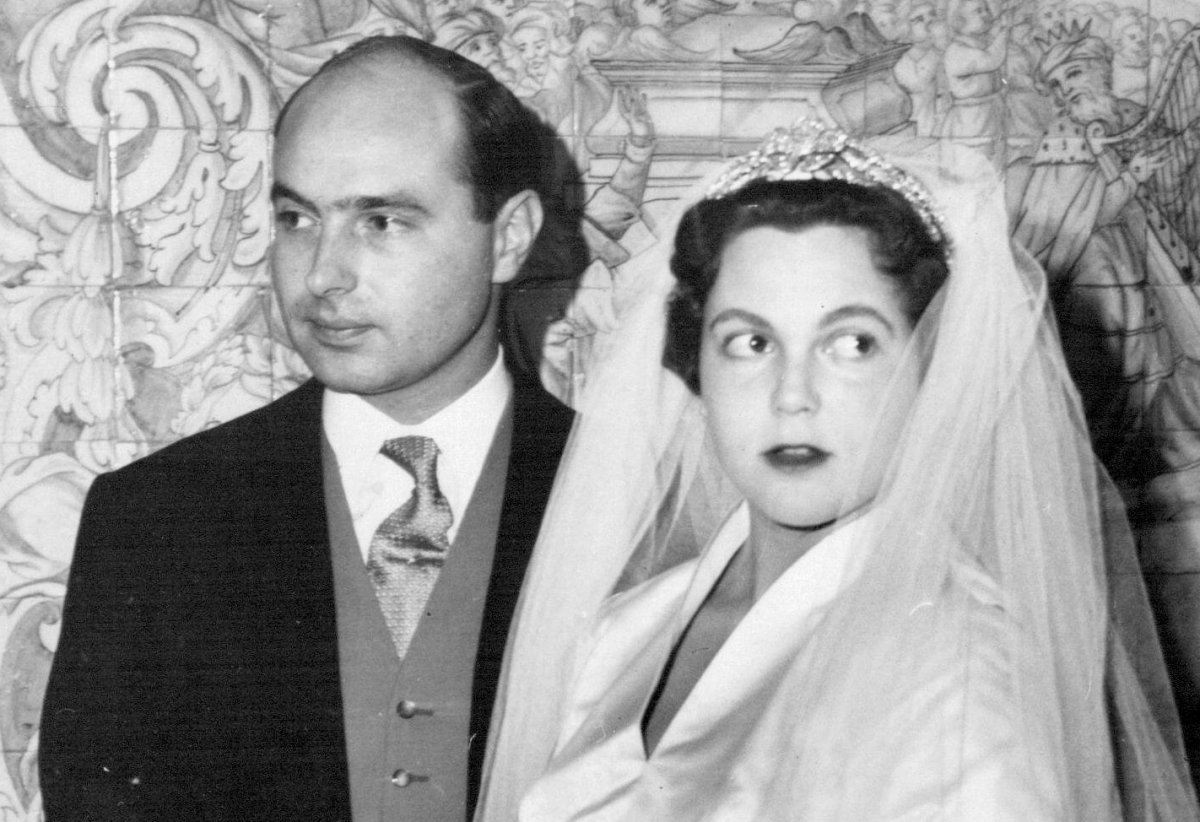
Today, the eldest daughter of the last King and Queen of Italy celebrates a major milestone: her 90th birthday. We’re joining in the celebrations of Princess Maria Pia of Savoy’s birthday today with a look at a special jewel from her past: the diamond tiara that she wore on her wedding day in 1955.
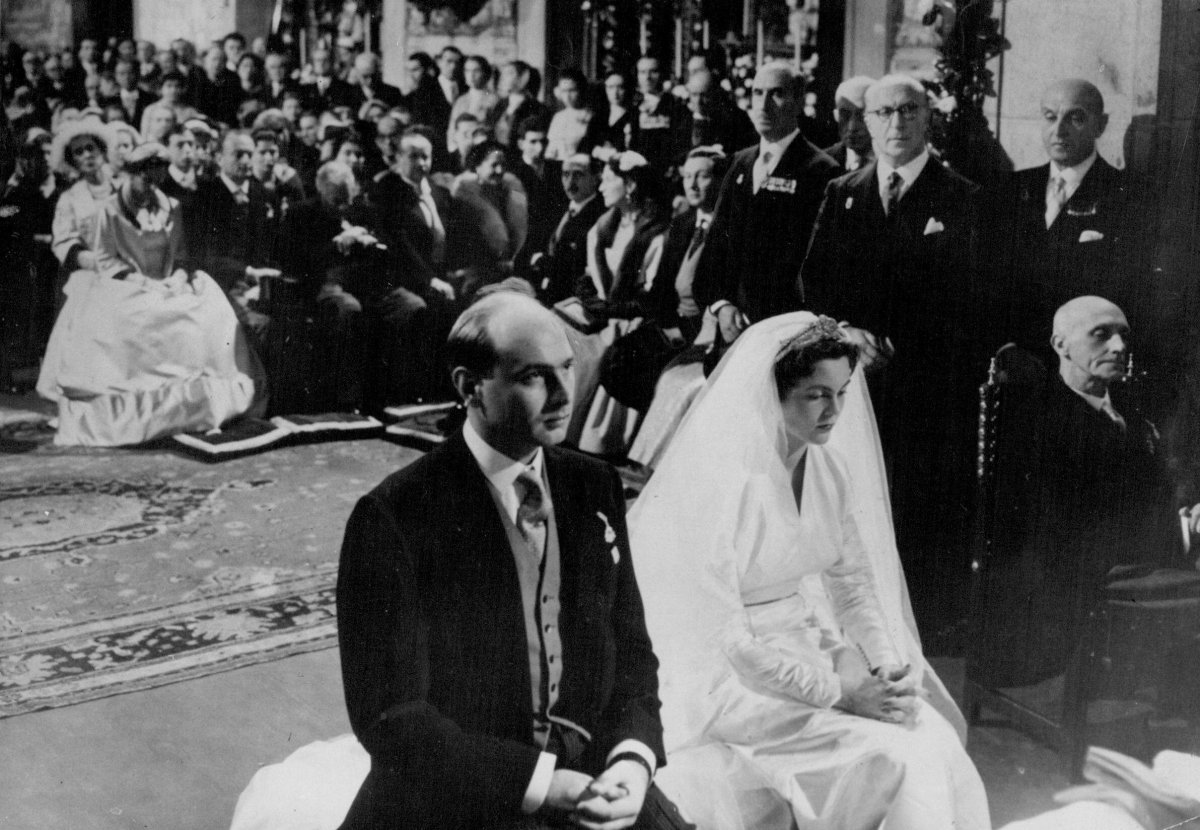
On February 12, 1955, royals from around Europe gathered in the Portuguese resort town of Cascais for a marriage that united two formerly-reigning royal families. Inside the Church of Nossa Senhora da Assunção in the seaside town, 20-year-old Princess Maria Pia, the eldest daughter of King Umberto II of Italy, wed 30-year-old Prince Alexander Karadordevic, a cousin of King Peter II of Yugoslavia. Six hundred guests witnessed the ceremony, during which the parish priest read out a decree from the Cardinal Patriarch of Lisbon that lifted a ban on so-called mixed marriages. (The bride was Roman Catholic and the groom was Orthodox.)
Why was a marriage between an Italian princess and a Yugoslavian prince held in Portugal? The resort of Cascais had been a popular summer destination for vacationing royals for more than half a century, with the former royal family of Portugal spending part of their summer holidays in the region as early as the nineteenth century. Some of the paintings in the local church had even been commissioned by Queen Amélie. The Portuguese royals had ties to their Italian cousins via Queen Maria Pia, who had been born a Savoyard princess. During the war, numerous exiled royals sought refuge in the region, including the Count and Countess of Barcelona and King Umberto and Queen Marie-José of Italy.
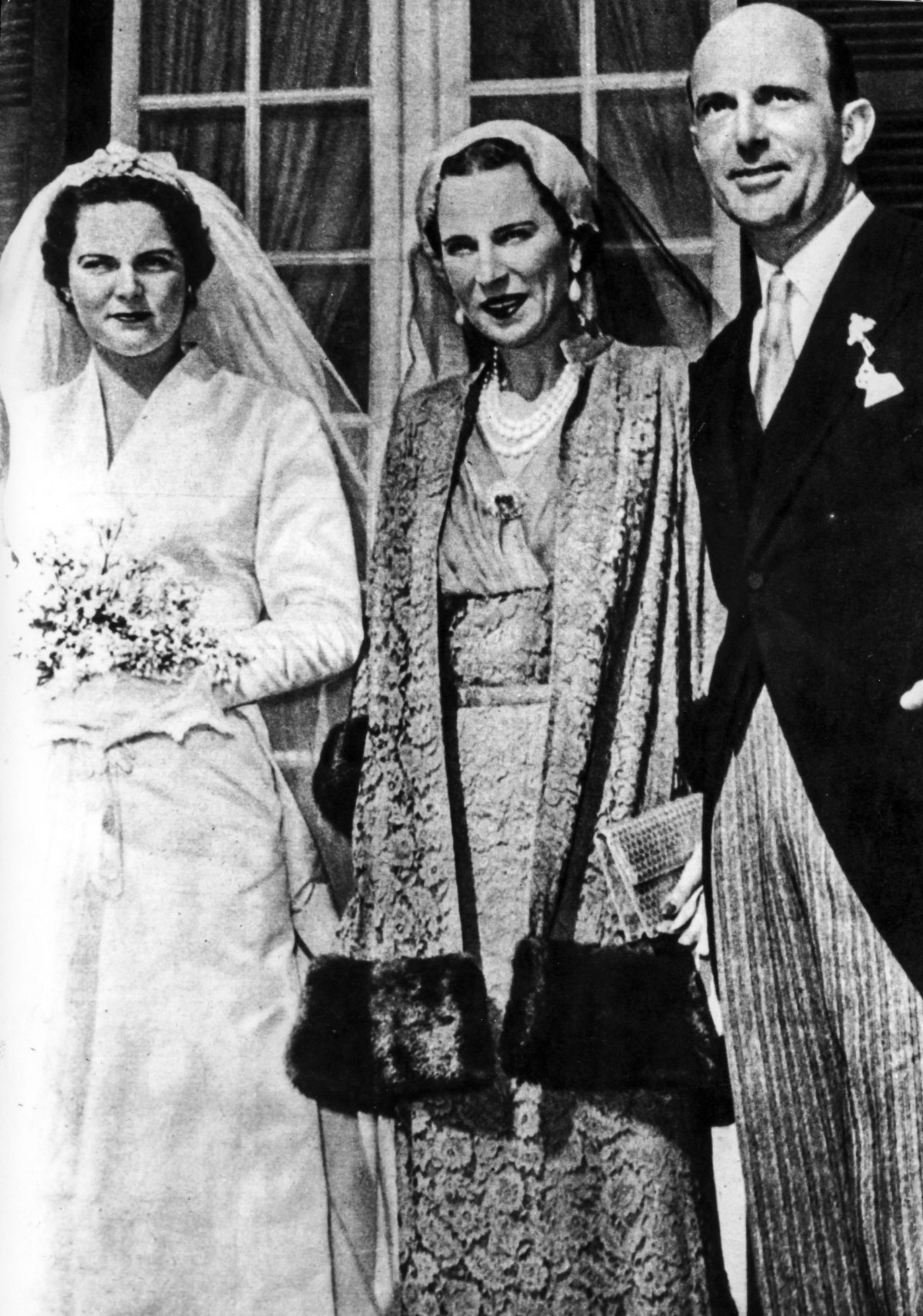
King Umberto II, the last Italian monarch, reigned in Italy for just 34 days in the spring of 1946. When a referendum ended the monarchy, Umberto and his Belgian-born wife, Queen Marie-José, left the country and were forbidden, under the terms of a new constitution, to return. (Jewels that they left behind are still in a safety deposit box in a bank today.) They intially settled on the Portuguese Riviera with their four children, Princess Maria Pia, Prince Emanuele Filiberto, Princess Maria Gabriella, and Princess Maria Beatrice. But their marriage, never a happy one, ended up fracturing. They separated and Marie-José moved with their children to Switzerland.
In exile, Princess Maria Pia and her family maintained close contact with their royal relatives on both sides. Through her mother, Maria Pia and her siblings were first cousins of King Baudouin of Belgium and Grand Duchess Josephine-Charlotte of Luxembourg, and on their father’s side, they were first cousins of Tsar Simeon II of Bulgaria and Prince Moritz of Hesse. In the summer of 1954, Princess Maria Pia joined her parents and her brother on a royal cruise of the Greek islands organized by King Paul and Queen Friederike of the Hellenes. The cruise aboard the Agamemnon was supposedly intended to boost tourism, but it also gave Friederike a chance to flex her matchmaking skills. More than 70 princes and princesses were on board, half of whom were in their teens and twenties. During the trip, 19-year-old Princess Maria Pia met her future husband, Prince Alexander of Yugoslavia.
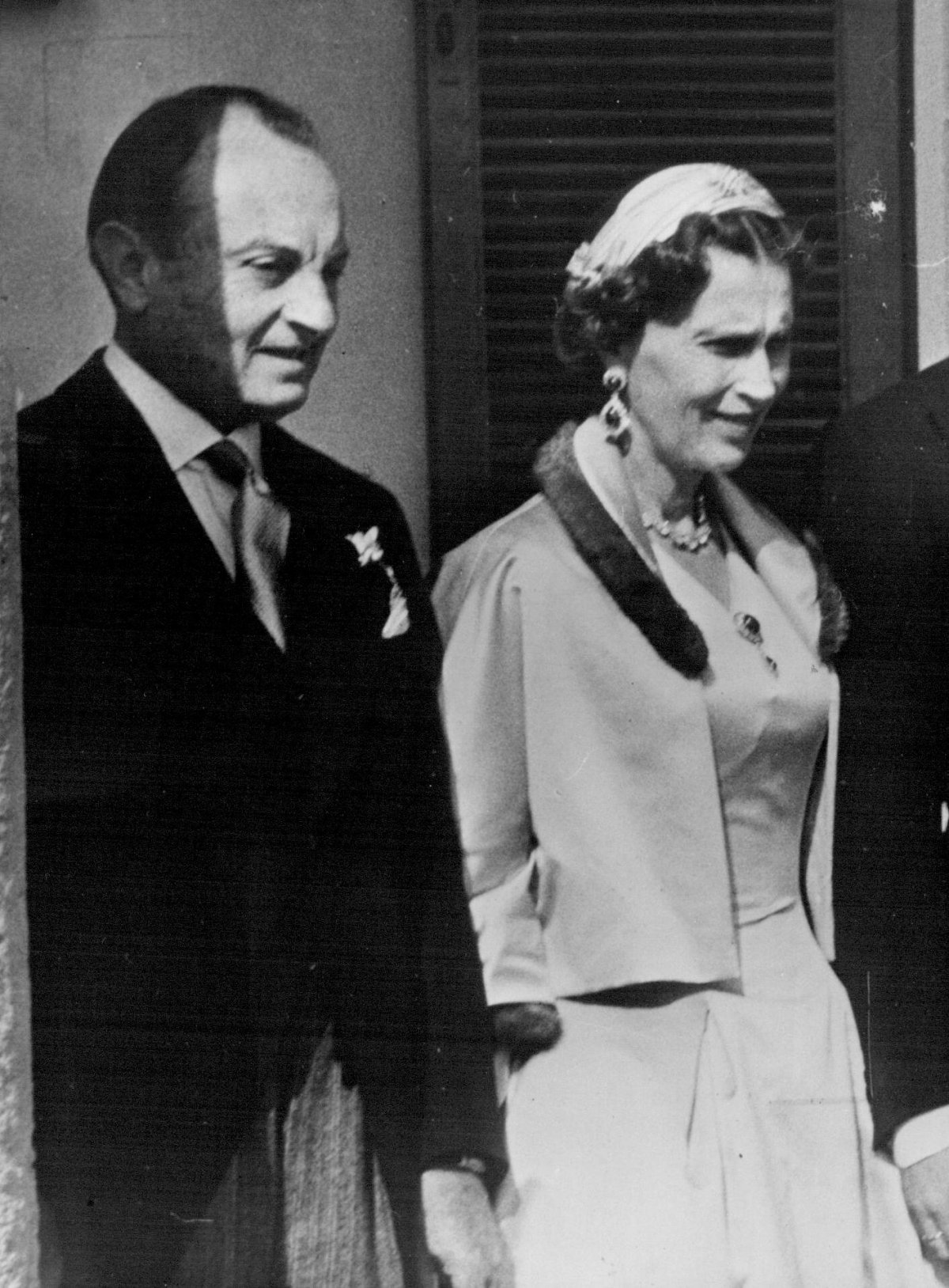
Prince Alexander, ten years older than his bride, was the eldest son of Prince Paul of Yugoslavia and Princess Olga of Greece and Denmark. Paul was a first cousin of King Alexander II of Yugoslavia. Educated in Britain, where he became a close friend of the Duke of York (later George VI) and the Duke of Kent, Paul met Princess Olga during a ball given by one of Olga’s cousins, Lady Zia Wernher. They were married in Belgrade in 1923 with the Duke of York serving as best man. Their first child, Alexander, was born at White Lodge in Richmond Park, the home of the Yorks, a year after their wedding. Two more children, Nicholas and Elizabeth, followed in 1928 and 1936.
When Prince Paul’s cousin, King Alexander II, was assassinated in 1934, Paul was appointed as Prince Regent for the new monarch, 11-year-old King Peter II. While Paul was acting head of state during World War II, the Yugoslavian government signed a pact with the Axis powers. Paul’s regency was subsequently ended in a coup supported by the British government. Paul, Olga, and their children were placed under house arrest by the British in Kenya for much of the rest of the war. They were granted asylum in South Africa in 1943. Prince Alexander, who had been educated at Ludgrove and Eton, later joined the Royal Air Force, serving as a flight lieutenant. With the Yugoslavian monarchy fully abolished, Alexander sought to establish himself in a career after his military service, working as a salesman for an appliance company, a pilot for British European Airways, and a representative for the shipping company owned by Stavros Niarchos.
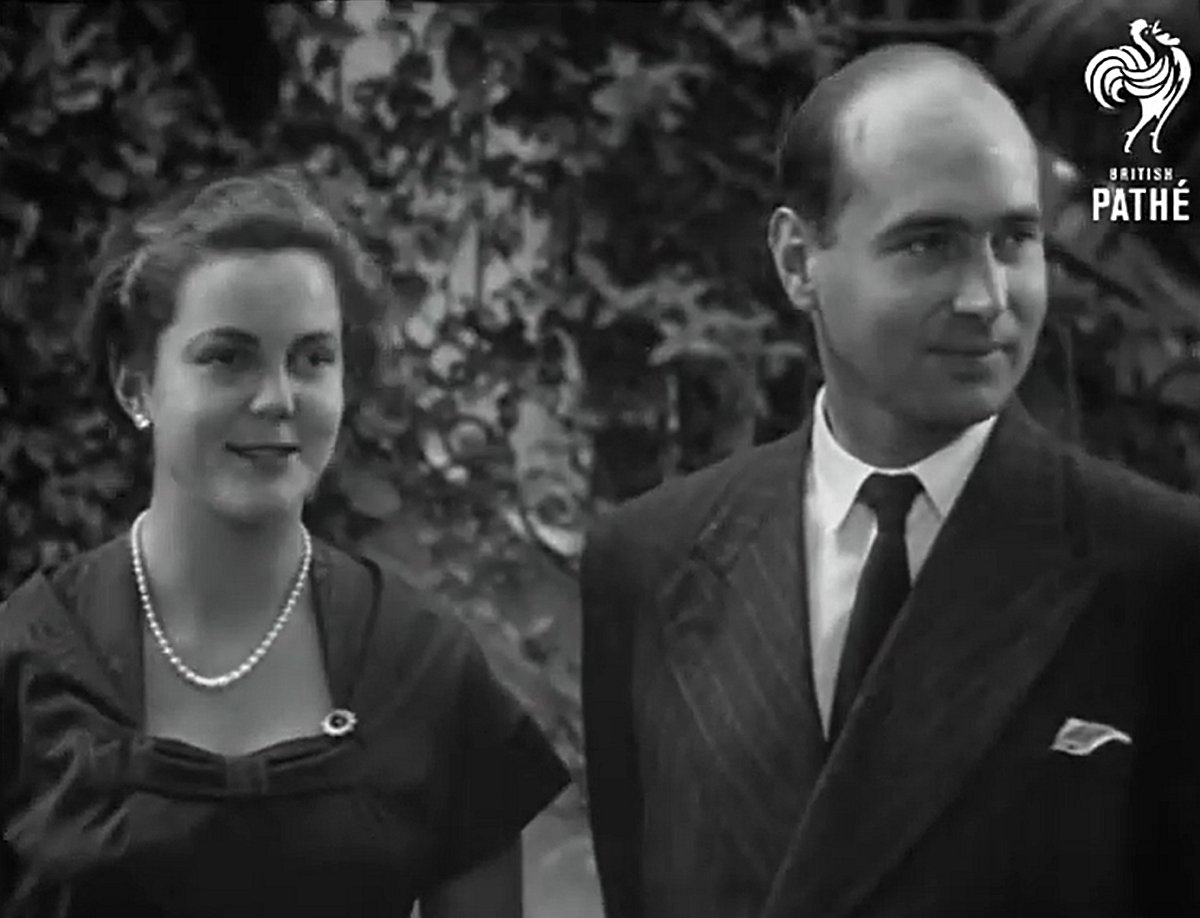
Alexander and Maria Pia’s engagement was announced exactly 70 years ago, on her 20th birthday in September 1954. The couple greeted the press at a chateau outside Geneva. Alexander presented Maria Pia with a large emerald engagement ring–with a stone “almost big enough to stop a drain,” the Daily Mirror quipped–which she wore on her right hand, reportedly per Yugoslavian tradition. Their wedding was scheduled to take place near her father’s home in Portugal, but many of the wedding preparations took place in London, where his aunt, the Duchess of Kent, and his mother, Princess Olga, spent much of their time. Shortly before the wedding, there were moments of anxiety when Prince Alexander was involved in a car accident in Essex a few weeks before the wedding. He suffered minor injuries when the car he was driving overturned but was otherwise unharmed.
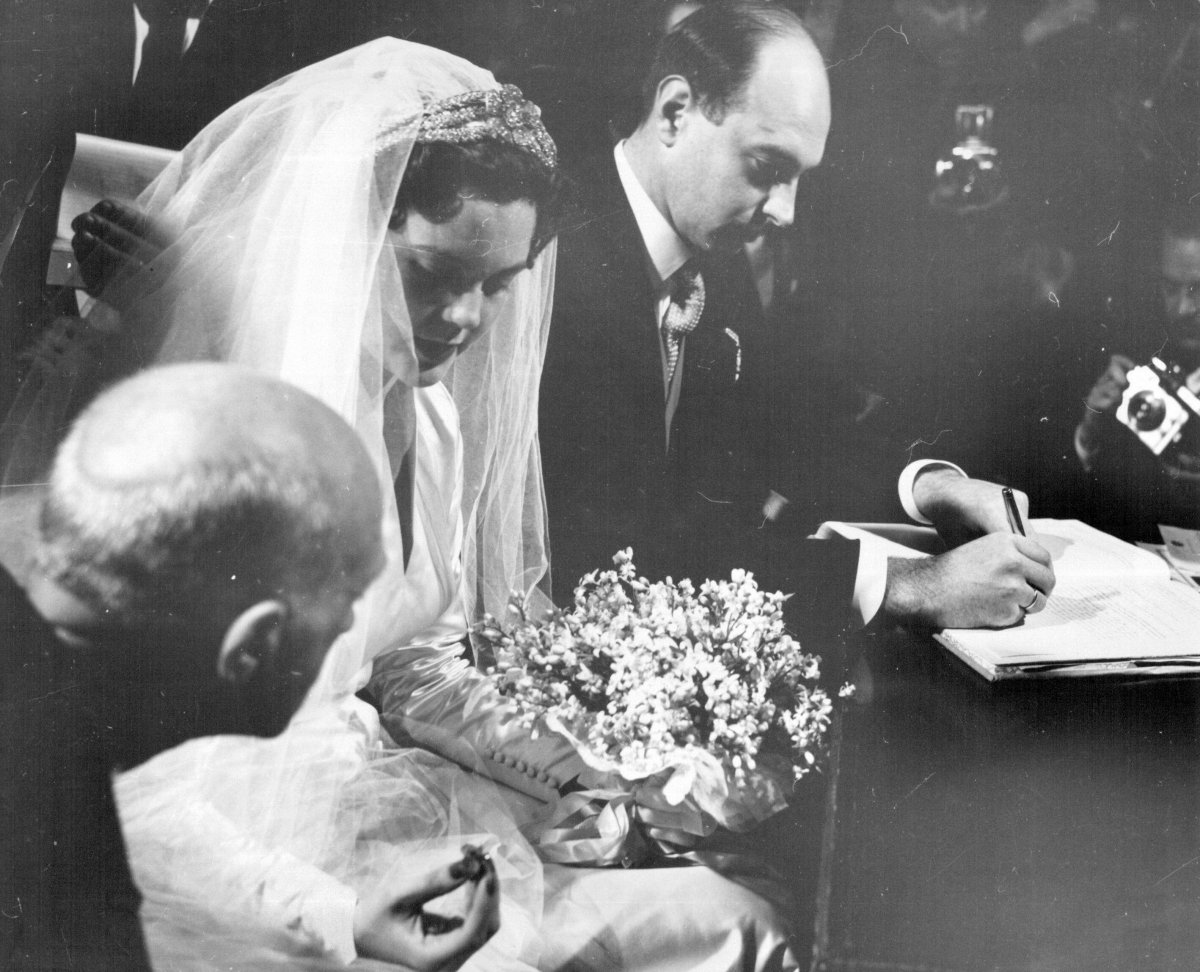
When the couple’s wedding day dawned in February 1955, royals from across Europe had descended on Cascais to attend the ceremony. King Umberto and Queen Marie-José were there, as were Prince Paul and Princess Olga. So was Princess Marina, Duchess of Kent, who attended with her elder son, the Duke of Kent, and her daughter, Princess Alexandra. Tsar Simeon of Bulgaria arrived with his mother, Queen Giovanna, who was a sister of King Umberto. The Count of Barcelona, then pretender to the Spanish throne, was greeted with cries of “El Rey!” by monarchists who had gathered outside the church. The Count of Paris, pretender to the French throne, was present as well, as were numerous other royal relatives.
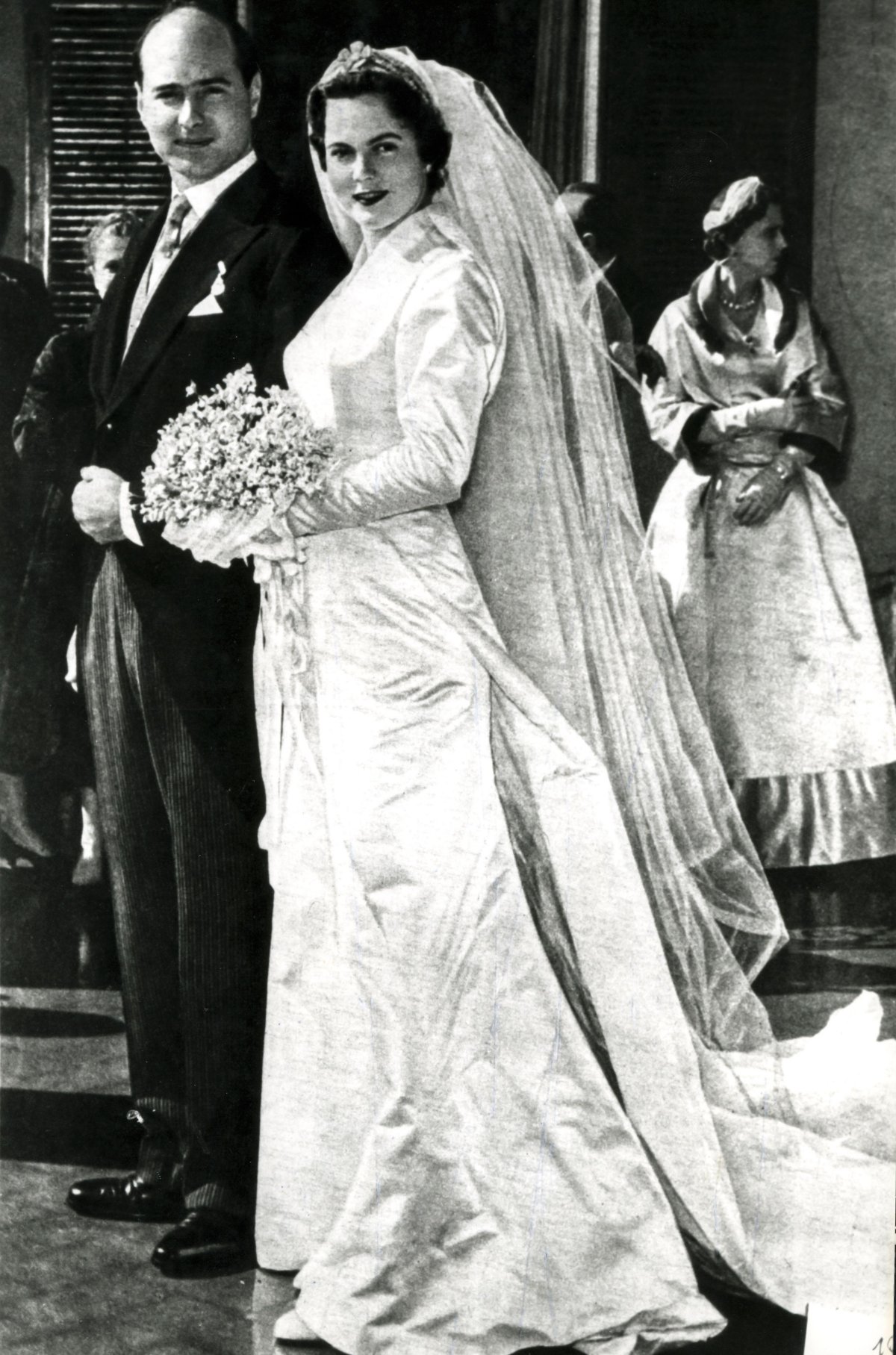
When she arrived at the church in Cascais for her wedding ceremony, Princess Maria Pia was wearing a sumptuous wedding gown produced by a prominent Italian couture house. Sorelle Fontana reportedly used more than 20 yards of embroidered satin to make the dress. The Montreal Star reported that the gown was a new design called Diamond, “made in simple lines with a brief, petal shaped train falling from the shoulders and is caught and molded at the waist with [a] small diamond shape detail.”
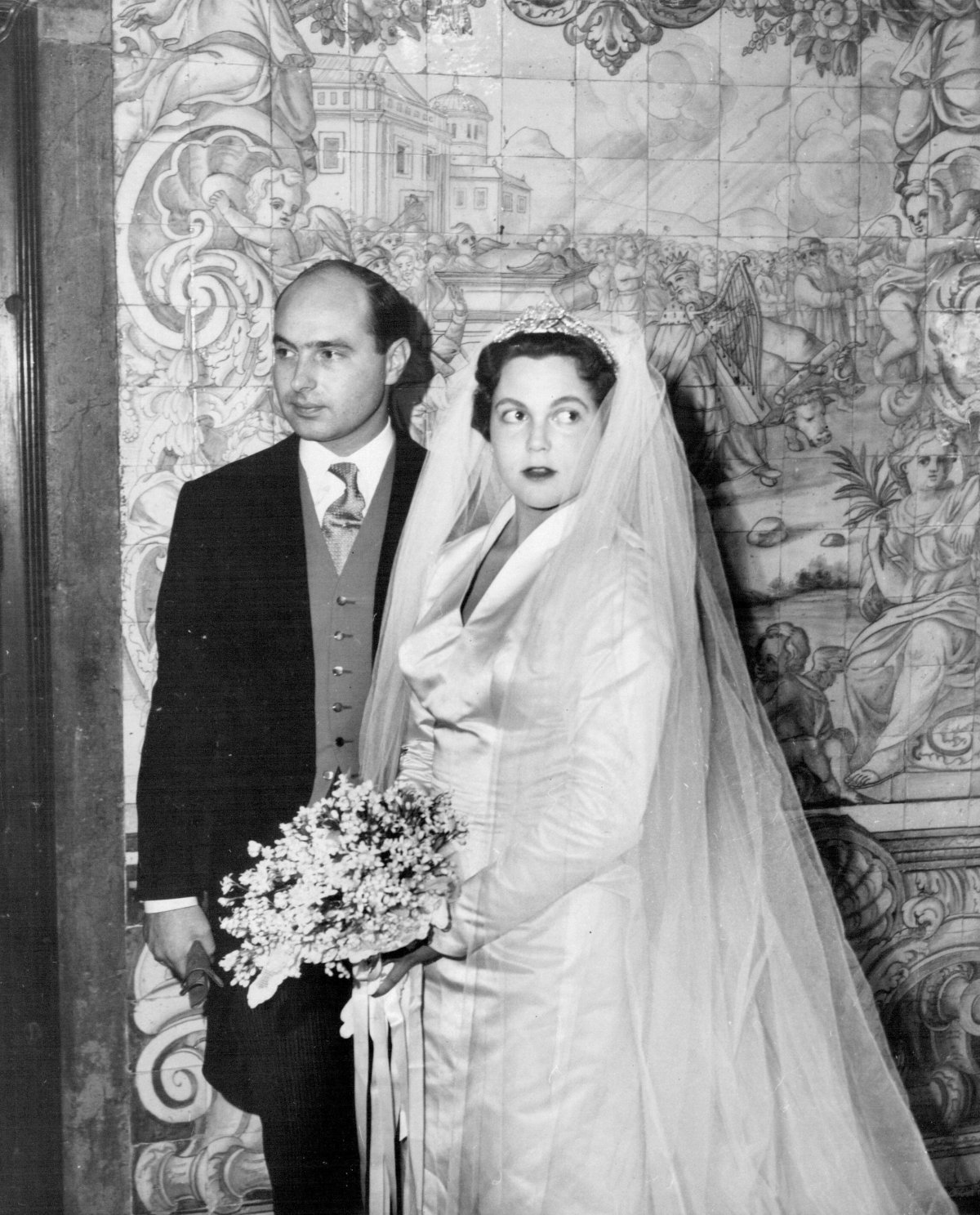
The 15-foot veil fell dramatically around Maria Pia’s shoulders during the wedding, nearly concealing her bridal bouquet at times. The Evening Standard wrote that, as the bride and groom drove from the church to her father’s villa nearby after the ceremony, “rose petals showered the princess and mingled with the bouquet of orange blossoms presented to her by the Mayor of Cascais.”
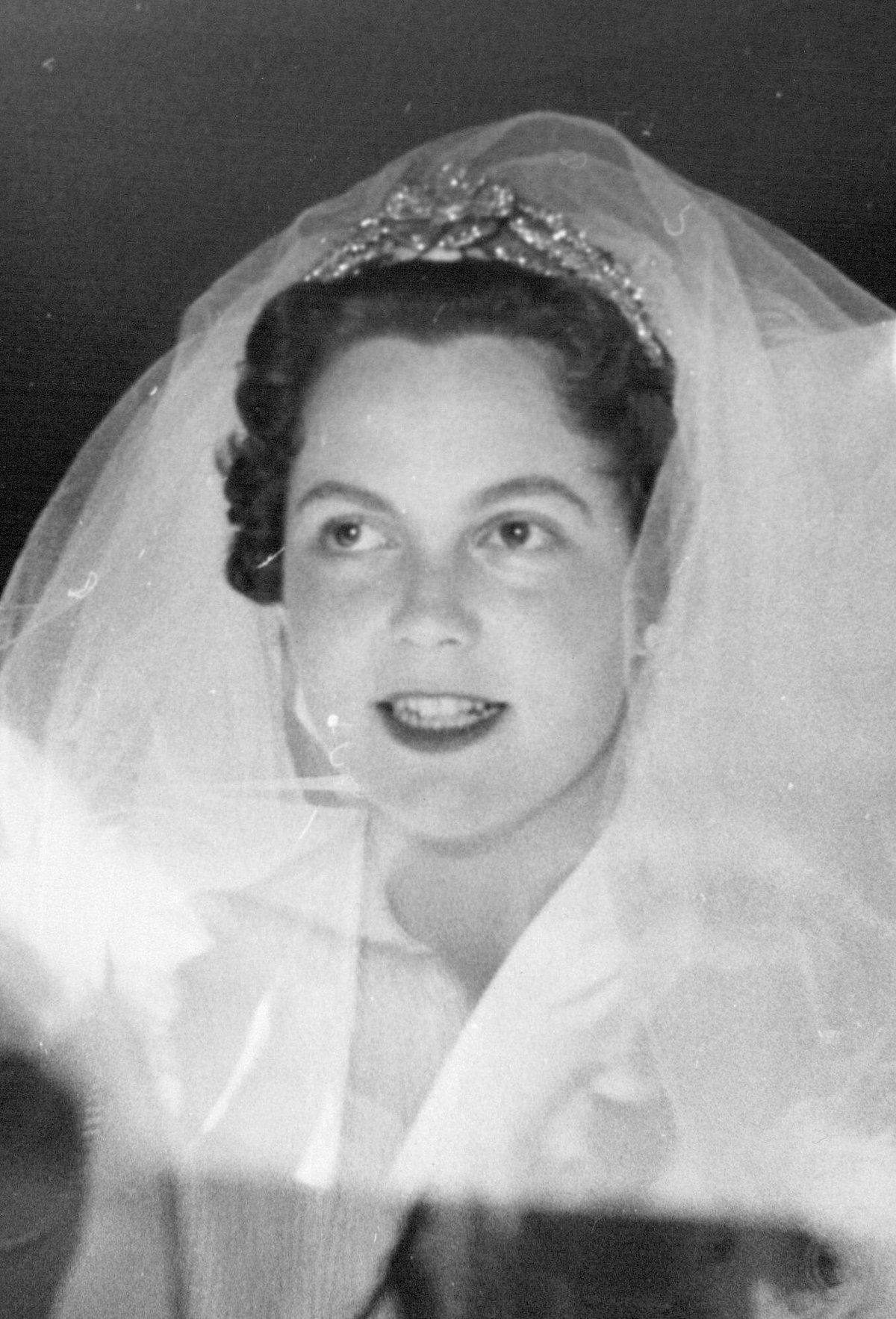
The Montreal Star also reported that Maria Pia’s bridal ensemble included a “small headdress to which the diamond tiara will be secured” that “was designed by Canessa and the tulle veil falls from this in several lengths.” The floral theme of the day continued through to the bride’s tiara. The diamond jewel, a legacy from the bride’s great-grandmother, Queen Margherita of Italy, featured antique diamond ears of wheat surrounding a large five-petaled blossom, also set with diamonds. The central flower ornament can be removed and worn separately as a brooch or the clasp of a necklace.
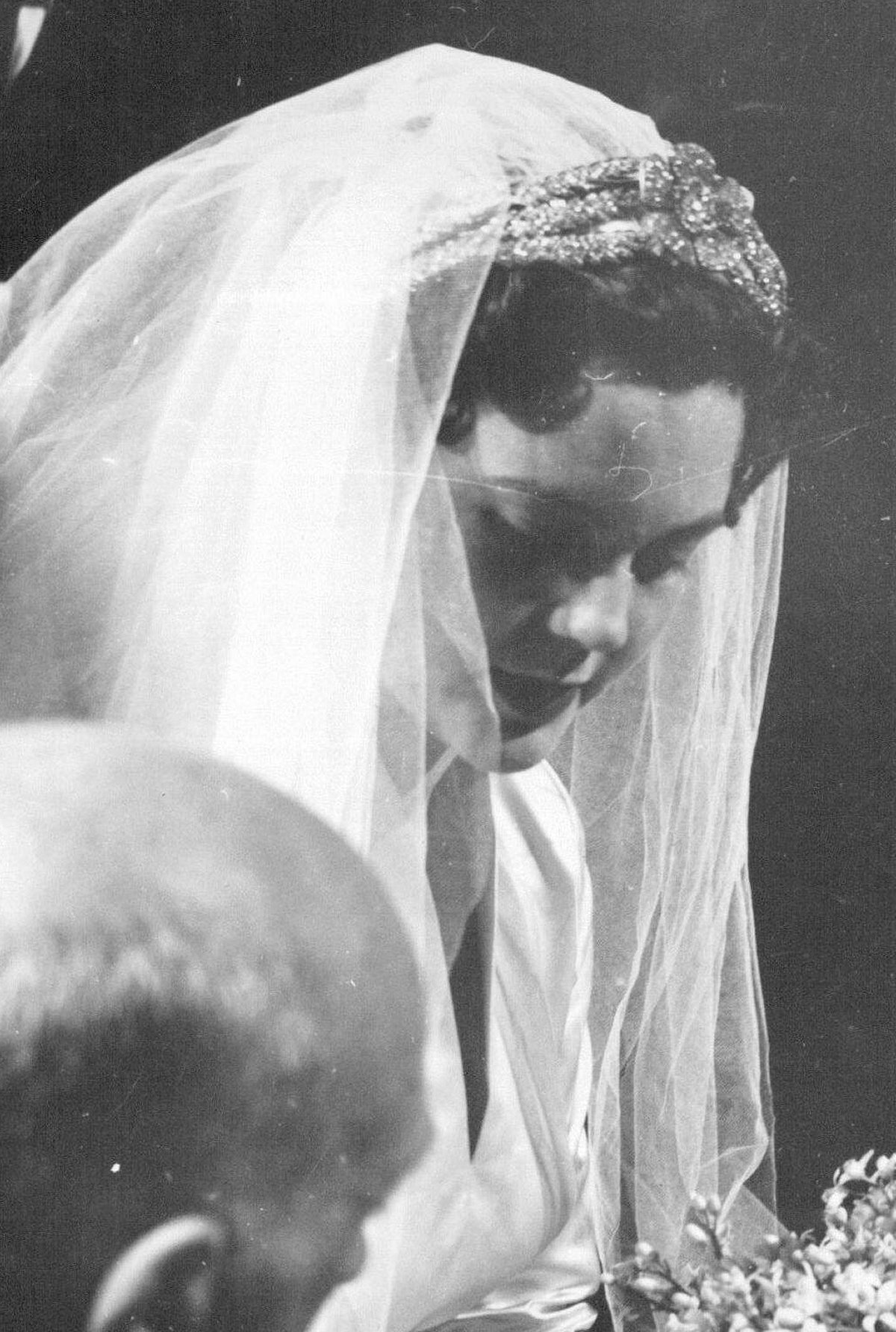
Here’s another look at the tiara from the wedding ceremony that shows the three ears of wheat on either side of the central blossom. The tiara, made by Musy, remained with the family collection. In the 1960s, it was worn more than once for gala events by the bride’s youngest sister, Princess Maria Beatrice of Savoy.
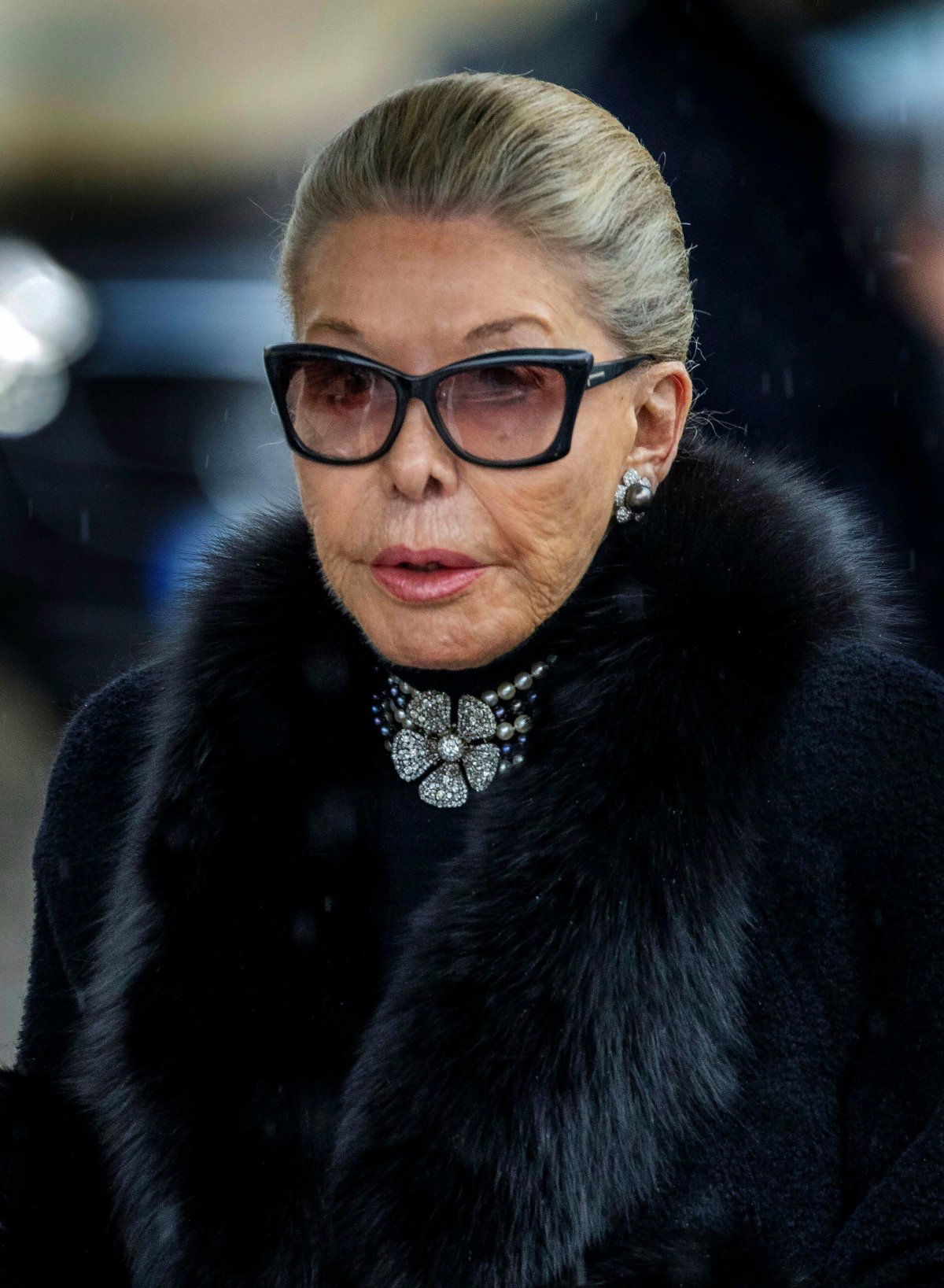
Most recently, we saw part of the tiara reappear during the funeral for Maria Pia’s brother, Prince Vittorio Emanuele. His widow, Marina, wore the central flower as the clasp on a pearl necklace for the service.
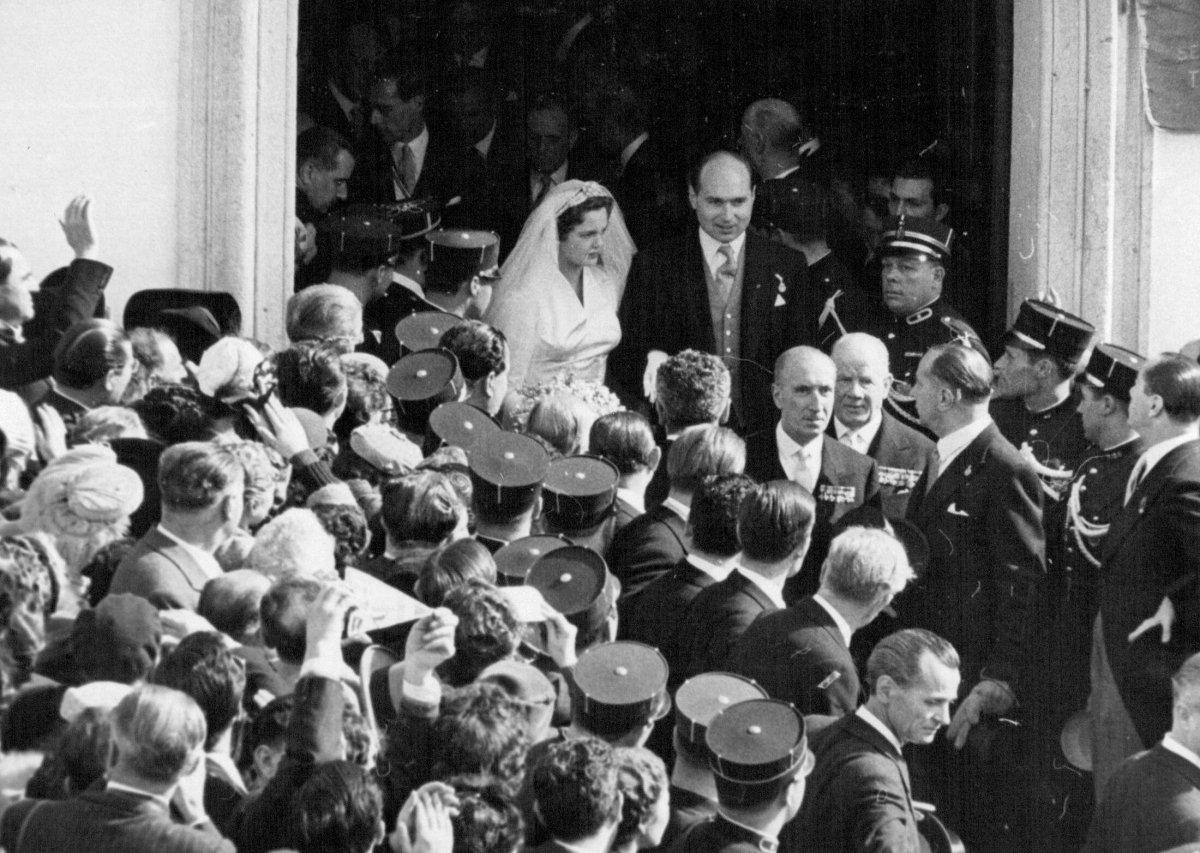
After the wedding ceremony, the royals celebrated the couple at an elaborate reception held at the famed Palace Hotel in nearby Estoril. Three years after the wedding, Maria Pia gave birth to the couple’s twin sons, Prince Dimitri (now a gemologist and jewelry designer) and Prince Michael, in France. In 1963, she had a second set of twins, Prince Serge and Princess Helene. In 1967, Maria Pia and Alexander’s marriage ended. In 1973, Alexander remarried to Princess Barbara, a member of the princely family of Liechtenstein, and had another son, Prince Dushan. Alexander passed away in Paris in 2016.
Princess Maria Pia also eventually remarried. Her second husband was Prince Michel of Bourbon-Parma, a son of Prince René of Bourbon-Parma and Princess Margaret of Denmark. They were married from 2003 until his death in 2018, but they’d been in love for much longer than that. Their relationship dated to the later years of her marriage to Alexander, and it is acknowledged by most that he was the biological father of Serge and Helene.
Leave a Reply
You must be logged in to post a comment.